Rainer Stropek
Leveraging Server-Sent Events (SSE) for Efficient Data Streaming in UI Development
#1about 6 minutes
The core problem of long-running HTTP requests
A simple demo illustrates poor user experience when a backend operation takes several seconds to complete, leaving the UI unresponsive.
#2about 6 minutes
Manually streaming data with HTTP chunks
Learn how to send partial responses from a Node.js server using `response.write` and process them on the client with `ReadableStream` and `TextDecoder`.
#3about 7 minutes
Introducing the Server-Sent Events protocol
The SSE protocol simplifies streaming by using a `data:` prefix and the browser's built-in `EventSource` API, which also handles automatic retries.
#4about 4 minutes
Using named events for structured messages
The SSE protocol supports sending named events using the `event:` key, allowing for more structured communication handled by specific event listeners on the client.
#5about 5 minutes
Ensuring reliable delivery with message IDs
Implement robust streaming by using the `id:` field in SSE messages, which enables the client to automatically send a `Last-Event-ID` header upon reconnecting.
#6about 7 minutes
Why SSE is relevant again because of OpenAI
OpenAI's streaming API uses Server-Sent Events extensively, leading to a resurgence of the technology for building real-time AI applications.
#7about 6 minutes
Building a streaming client for the OpenAI API
A practical demo shows how to use the OpenAI SDK, which abstracts SSE into a `for await` loop, and then stream the results from your server to the client using SSE.
#8about 12 minutes
Q&A on SSE implementation and best practices
Discussion covers topics like connection timeouts, keep-alive messages, server scalability for many connections, and use cases beyond text streaming.
Related jobs
Jobs that call for the skills explored in this talk.
Matching moments
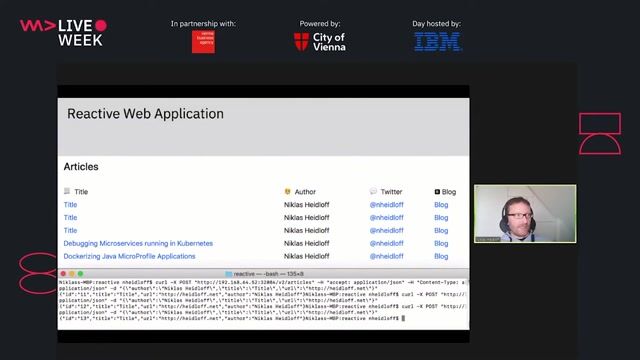
25:37 MIN
Streaming data to web clients with SSE
Development of reactive applications with Quarkus
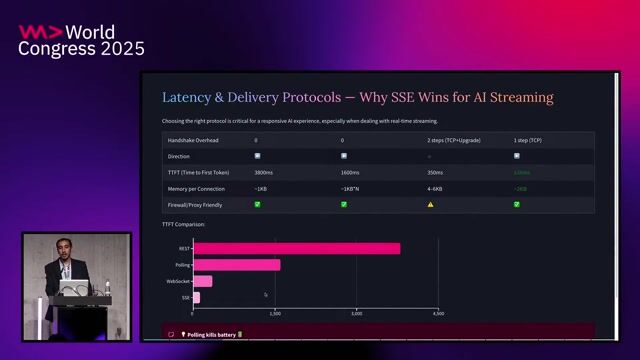
04:14 MIN
Comparing SSE, WebSockets, and polling for real-time data
Streaming AI Responses in Real-Time with SSE in Next.js & NestJS

28:30 MIN
Understanding SSE limitations and its key benefits
Streaming AI Responses in Real-Time with SSE in Next.js & NestJS
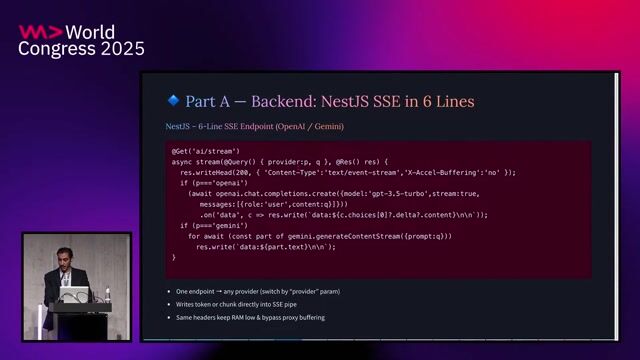
10:26 MIN
Implementing an SSE endpoint in NestJS for AI streaming
Streaming AI Responses in Real-Time with SSE in Next.js & NestJS
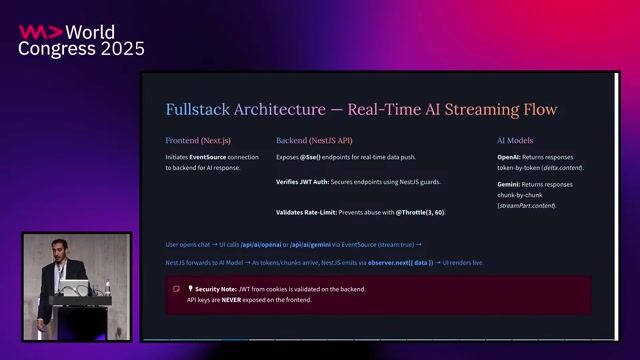
06:28 MIN
A full-stack architecture for streaming AI responses
Streaming AI Responses in Real-Time with SSE in Next.js & NestJS
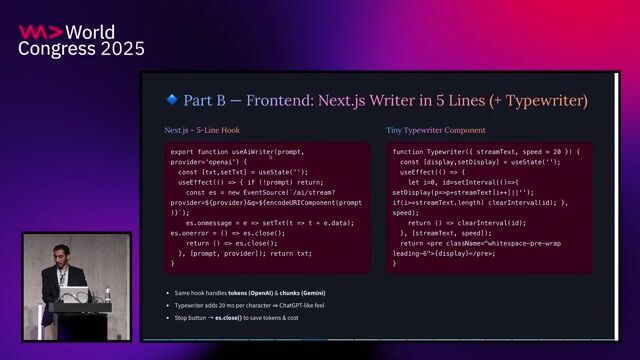
12:42 MIN
Consuming SSE streams in Next.js with EventSource
Streaming AI Responses in Real-Time with SSE in Next.js & NestJS

21:27 MIN
Scaling SSE applications for thousands of concurrent users
Streaming AI Responses in Real-Time with SSE in Next.js & NestJS
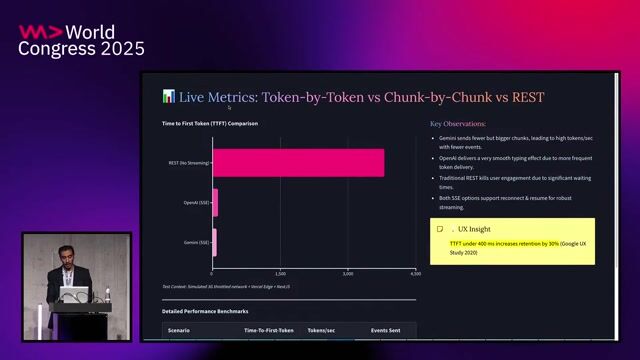
14:57 MIN
Using SSE for notifications and real-time file sharing
Streaming AI Responses in Real-Time with SSE in Next.js & NestJS
Featured Partners
Related Videos
 29:54
29:54Streaming AI Responses in Real-Time with SSE in Next.js & NestJS
Ahmed Megahd
 49:57
49:57Uncharted Territories of Web Performance - Andrew Burnett-Thompson and David Burleigh
Andrew Burnett-Thompson & David Burleigh
 40:24
40:24Snappy UI needs no Single-Page Application
Clemens Helm
 57:52
57:52Develop AI-powered Applications with OpenAI Embeddings and Azure Search
Rainer Stropek
 57:45
57:45Wasm Deep Dive - A Glance Behind the Scenes
Rainer Stropek
 57:23
57:23Exploring the Latest Features of .NET and C# by Building a Game
Rainer Stropek
 53:46
53:46WeAreDevelopers LIVE – AI vs the Web & AI in Browsers
Chris Heilmann, Daniel Cranney & Raymond Camden
 48:07
48:07Server Side Serverless in Swift
Sebastien Stormacq
From learning to earning
Jobs that call for the skills explored in this talk.
![Senior Software Engineer [TypeScript] (Prisma Postgres)](https://wearedevelopers.imgix.net/company/283ba9dbbab3649de02b9b49e6284fd9/cover/oKWz2s90Z218LE8pFthP.png?w=400&ar=3.55&fit=crop&crop=entropy&auto=compress,format)
Senior Software Engineer [TypeScript] (Prisma Postgres)
Prisma
Remote
Senior
Node.js
TypeScript
PostgreSQL

Lead Fullstack Engineer AI
Hubert Burda Media
München, Germany
€80-95K
Intermediate
React
Python
Vue.js
Langchain
+1






